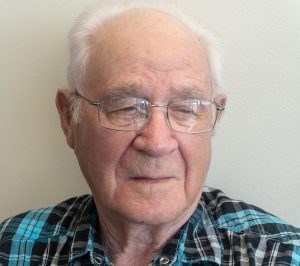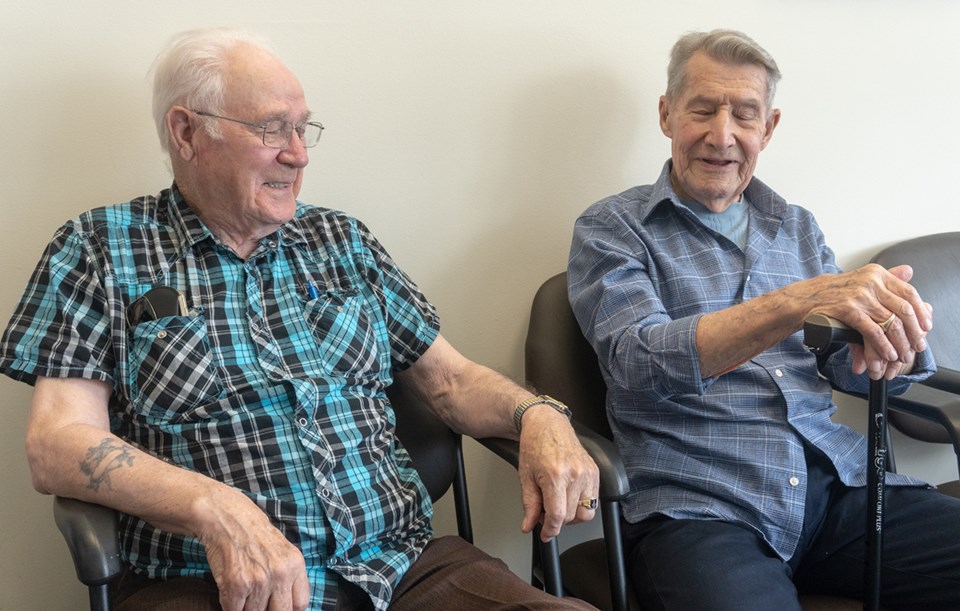Troy Shantz
Two Sarnia veterans are returning to France this week, celebrating the 75th anniversary of the D-Day invasion.
Joe Edwardson, 95, and Roy Hare, 94, each participated in the historic raid and subsequent campaign across Northern France. They’re scheduled to attend the June 6 ceremonies at Juno beach, where some 15,000 Canadian troops landed in 1944.
Edwardson chatted with fellow soldiers of the Regina Rifles as their landing craft was battered by rough seas that morning. They were among thousands of Allied troops that trained for months in the English countryside in anticipation for that day, he said.
“I don’t think we were all that scared, just plain curious,” said the retired pipefitter. “When the shells started coming in, you knew you were involved.”

As the small craft was rocked by nearby explosions and violent waves, the decision was made to unload the soldiers before reaching the beach. As the gate dropped a barrage of machine gunfire immediately killed several of the Regina Rifles, Edwardson said.
Those that made it out were met with deep, frigid waters. Weighed down by 60 pounds of equipment, Edwardson started sinking. He credits his life to an unknown soldier that grabbed him before he disappeared under the waves, he said.
“You said to yourself, how long is this going to last, or how long am I going to last?”
His group was tasked with destroying German communications. Amidst the chaos the Canadians were successful, he said with a smile. In fact, Canada pushed in 11 kilometres beyond Juno, the largest advance of all the Allied forces.
“Everybody got their objectives that day.”
Allied forces suffered about 10,000 casualties during the operation. Of those 359 Canadians were killed and 715 wounded.
Ninety-thousand Canadians took part in the ensuing Battle of Normandy. Of those was Roy Hare, who arrived with Windsor’s Essex-Scottish Regiment. By this point, Allied forces had pushed as far as Cone, France. He arrived at the front lines around 3 a.m., sleeping under a parked truck for a few hours before entering the fray, he said.

For months, Hare and his unit continued to fight, eventually pushing into the Netherlands. He recalled how they overwhelmed one German company, comprised mostly of teenage boys.
Surrounded by their dead comrades, some of the young German soldiers cried for their mothers, Hare said.
“That’s one of the things that stands out,” he said. “Most of them were just kids…15, 16 years old. Some of them didn’t even have boots.”
Hare was eventually captured by the Germans, but liberated shortly after. He returned to Canada in 1946, settling in Sarnia where he also worked as a pipefitter.
Edwardson made it home by Christmas 1945 and moved to Sarnia in the 1960s.
This year about 3,000 are expected for the international ceremony at Juno beach, the CBC reported.
